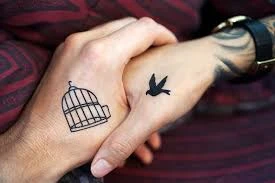Amidst the spread of the deadly Coronavirus, we can experience a new emerging trend in the fashion industry- Photoshoots via FaceTime or Zoom Video Calls. While models, designers, stylists, photographers, makeup artists, and all of the various essential assistants are shut-in at home, fashion publishing and advertising have not stopped. Instead of calling it quits, many fashion figures across the globe are looking out for newer technological advancements to help them churn out content and marketing materials during the COVID-19 shutdown.
Now, with the obvious roadblocks, online photoshoots are being poised as the future of fashion photography. Several brands have embraced a more low-key style when it comes to new fashion campaigns. Not only does this stand to change how fashion imagery is created, it raises some interesting questions from a legal point of view, namely, about authorship and ownership.
In terms of copyright law, the exclusive rights in a work – including the right to reproduce, display, and sell a work, etc. – are bestowed upon the “author” of the creative work. When it comes to photos, the “author” is the photographer.
But, the question is, if the photographer can only direct a shoot remotely, (e.g. cannot physically adjust anything in the frame), does the model play a greater role in the collaboration and thus, merit co-author status in the expressive works created?
The joint authorship argument is not entirely unheard of. It came up, to a certain extent, in Gillespie v. AST Sportswear when the U.S. District Court for the Southern District of New York held in 2001 that it would be possible for a jury to find that the subject of a photo is the joint author of photographs where he/she contributed to ‘clothing’ and ‘poses’ of models. The photographer may be directing the model and choosing when to hit the snap button but may be unable to manipulate the camera for angles. This could mean that the model might take on a more collaborative and creative role than she maybe otherwise would, which could create a greater level of authorship on the part of the subject, and thereby, entitle her to the same rights of authorship as the photographer.
Jeremy S. Goldman, a partner at Frankfurt Kurnit Klein & Selz PC, states that “joint authorship requires objective manifestations of a shared intent between the parties to be co-authors.” As for what such intent looks like, Dale Cendali and J. Michael Keyes assert in their work, Copyright Litigation Strategies, that “the expressions of intent that may give rise to a finding of joint ownership are most easily discovered by assessing the various tasks that are required to create the final product.”
INDIAN LEGAL PERSPECTIVE
Photographs are protected as Artistic work under Section 2 (c) of Copyright Act 1957 in India. In case of a photograph, the photographer will be the first owner unless there is an agreement to the contrary, as per Section 17(b) of the Copyright Act, 1957. So even if you own the camera but your friend takes a photograph, which is stunning, your friend owns the copyright to the image.
The original skill and labor involved in taking of the photograph may consist in arranging the objects photographed or in selecting the exact moment or size for a photograph of the moving object or objects. Thus, one can safely draw an inference that it is not important for creativity to be a product of arduous work only, such as that of making a sculpture or painting or drawing, but it can prevail while taking a photograph as well which only takes a split of a second.
Ultimately, the courts have made it clear that creative contributions, no matter how important, are not enough to establish joint authorship when you cannot show control and intent. With that in mind, the fact that the model plays a bigger role in posing, setting up the shoot, etc., does not necessarily change things [in terms of authorship], particularly provided that the photographer has the final call and may never have intended to share authorship with the model.


